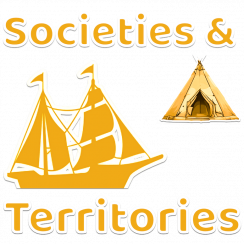A difficult situation
In 1980, Indigenous Peoples made up less than 1% of Quebec’s population, but their numbers had increased rapidly since the 1960s. Indigenous and non-Indigenous people living in Quebec noted many inequalities faced by Indigenous Peoples before and after this time period. In the 1980s, sixty percent of Indigenous peoples received employment or welfare benefits, and their income was much lower than that of most English or French Canadians. The infant mortality rate was three times that of other Canadians, and life expectancy was 10 years less. In addition, the suicide rate for Indigenous people less than 20 years old was six times greater than that of the average Canadian.
A lot of these inequalities were brought on by issues related to colonization. For example, the economy in many Indigenous communities changed greatly in a matter of a few years. Indigenous societies in Canada were now sedentary and relied on money for survival. The fur trade was no longer profitable and jobs in many of their communities were limited. Moreover, many jobs required Indigenous Peoples to have formal education or training that was not available in their communities. All of these changes impacted the financial security of Indigenous Peoples. Moreover, many Indigenous communities did not have access to basic needs like clean water and hospitals. When they did have access to medical care, it was often not in their first language. This impacted the physical and mental health of Indigenous adults, children, and infants. Finally, residential schools and their ongoing legacy impacted and continues to impact the mental health of many Indigenous peoples.
Negotiations and claims
In 1969, the Government of Canada proposed the abolishment of the Indian Act to fully integrate Indigenous Peoples into Canadian society. This would have impacted the status of Indigenous peoples in Canada. t. Indigenous peoples were strongly opposed to this project because they believed it would lead to the disappearance of their culture. The government finally decided not to abolish the Indian Act. Since then, the Indigenous nations from across Canada have come together to make joint claims. They have worked together to negotiate different aspects of the Indian Act.
Indigenous Peoples desire more autonomy for their communities. Many First Nations desire increased autonomy for band councils that administer the reserves. They also want to be more involved in the economic development of their regions. Finally, many Indigenous communities are concerned about the preservation of their culture. Some nations, such as the *Kanyen’kehà:ka (Mohawks) of Kahnawake [Kahnawà:ke] have established schools to teach their language and traditions.
Author: Alexandre Lanoix. Additions and adaptations by LEARN.
Kanyen’kehà:ka – Means “People of the Flint”. An Indigenous Nation who traditionally lived in the Eastern New York area all the way north to the St. Lawrence. They still live in these areas, and in towns in Canada like Kahnawà:ke, Kanehsatà:ke, Akwesasne, Tyendinaga and the Six Nations reserve in Brantford, Ontario. Some people use the term “Mohawk” to refer to the Kanyen’kehà:ka Nation, but Kanyen’kehà:ka is usually the preferred name used by members of the nation.




